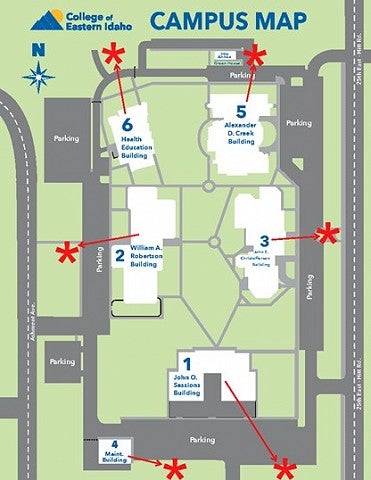Assembly Area Map

Idaho Falls Stay Informed
Pulsepoint
Only about one third of sudden cardiac arrest victims receive bystander CPR, and public access Automated External Defibrillators (AEDs) are used less than 3% of the time when needed and available. Currently, there are far too few bystander rescuers – not too many. The goal of the app is to engage additional bystanders in these lifesaving acts. Thank you for helping us change these statistics and save more lives!
PulsePoint App Instructions:
- Download the free PulsePoint app using your Apple IOS or Android device
- Once installed, tap the PulsePoint icon on your device to launch the app
- Review app terms
- Tap the white dial at the top of the screen to select an agency to follow
- Tap add agency
- Type in Idaho Falls Fire Department
- Tap the word follow in the upper right-hand corner
How does PulsePoint work?
- A CPR notification arrives as a normal push notification. This notification will be accompanied by a distinctive alert tone. Opening the notification will load the PulsePoint app. The screen will display your current location, the general reported location of the cardiac arrest victim, and any nearby AEDs (defibrillators)
- To receive a "CPR Needed" activation, you must have the CPR notification type selected in the Settings Menu and you must be in the immediate vicinity of a reported cardiac arrest
- The app aims to notify those essentially within walking distance of the event location.
Alertsense Public Safety Alerts
Sign Up to receive public safety alerts from Bonneville County -- a free service for our residents. These alerts are provided free of charge, however, standard text messaging rates and other charges may apply from your wireless carrier. Download the free MyAlerts app today from the Google Play Store or the Apple App Store OR text your zip code to 37801.
Basic Disaster Supplies Kit
Supply kit items should be stored in airtight plastic bags and put your entire disaster supplies kit in one or two easy-to-carry containers such as plastic bins or duffel bags.
A basic emergency supply kit could include the following recommended items:
- Water (one gallon per person per day for at least three days, for drinking and sanitation)
- Food (at least a three-day supply of non-perishable food)
- Battery-powered or hand crank radio and a NOAA Weather Radio with tone alert
- Flashlight
- First aid kit
- Extra batteries
- Whistle (to signal for help)
- Dust mask (to help filter contaminated air)
- Plastic sheeting and duct tape (to shelter in place)
- Moist towelettes, garbage bags and plastic ties (for personal sanitation)
- Wrench or pliers (to turn off utilities)
- Manual can opener (for food)
- Local maps
- Cell phone with chargers and a backup battery.
Go to Ready.gov/kit for more information!


